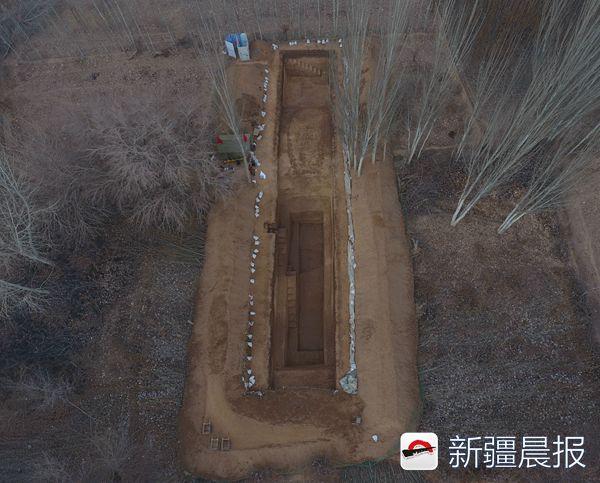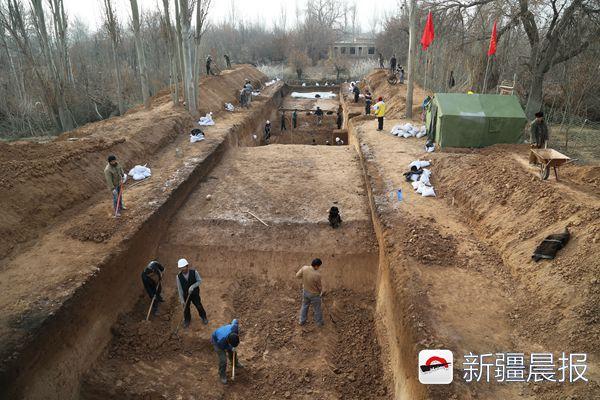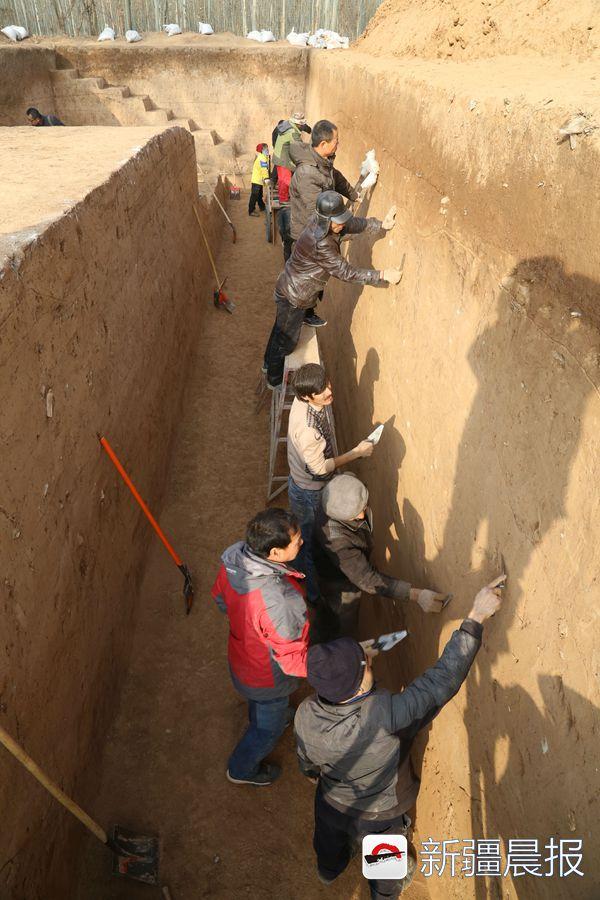Silkroads News
A Section of City Wall And A U-shape Moat Excavated in the Qiuci Ancient City of Xinjiang
Archaeologists excavated the city wall and the moat at the orchard and nursery of Langshe District, Kuqa Town
Recently, the Xinjiang Morning News reporter learned from the archaeological excavation site of Qiuci Ancient City Ruins, Kuqa County, Xinjiang that the archaeologists had excavated a section of city wall and a moat southeast of Qiuci Ancient City after over one-month excavation. According to the initial speculation, this section of city wall and the moat should not be the earliest remains of the ancient city.
According to Wu Yong, the project leader of the archaeological excavation of Qiuci Ancient City and the director of Xinjiang Institute of Cultural Relics and Archaeology, the excavation site of the Qiuci Ancient City Ruins was located at an orchard and nursery of Langshe District,Kuqa Town, Kuqa County. In order to learn more about the shape, layout and the history of Qiuci Ancient City, to understand the situation of the economic and cultural exchanges of the ancient Silk Road, and to do a good job in the protection planning of the ancient ruins, the Qiuci Ancient City archaeological excavation project was formally launched onNovember 25 and was scheduled to complete by March 30 next year.
Wu Yong said that before the start of the archaeological excavation,Xinjiang Institute of Cultural Relics had employed the Archaeology Institute of Shaanxi Province to launch a large-scale archaeological excavation for the ancient city, which initially proved that the girth wasabout 7 km. The purpose was to understand the shape and structure of the south wall section of Qiuci Ancient City, and to provide reference information for the protection planning of the ancient city.
Up till now, the archaeologists found one section city wall at the east section of the south city wall of Qiuci Ancient City.“The city wall was constructed by ramming earth method measuring 70 centimeters from the ground with the length of 1.8 meters and the width of 19 meters,”Wu Yong said. From the perspective of the recent excavation, the city wall may be extended since its central section was much tighter and the materials were less, while the layers of both sides of the wall were relatively thicker and the soil was looser with more materials. The archaeologists also found the palm bricks and other relics from Tang Dynasty. It indicated that the time of the city wall extension should not be earlier than Tang Dynasty. However, its specific time of construction and discard was still to be further studied.
He introduced that the archaeologists found another moat at the place which was 2.7 meters away from the ground outside the city wall. “The moat had the U-shape with the mouth’s width of 7.5 meters and the depth of 3.1 meters,”he said. They discovered two layers of cultural accumulations with longer history during the excavation of the moat, which indicated that the moat should not be the earliest remains of the Qiuci Ancient City.
It was reported that Qiuci Ancient City had thousand year of history from Western Han Dynasty to Song Dynasty. In Qin and early Western Han Dynasties, Qiuci was one of the 36 states of the Western Regions with prosperous culture and economy. The history of the grottoes art of Qiuci was longer than that of the Mogao Grottoes. In addition, Qiuci was famous for its songs and dance and the iron smelting industry. In 59 B.C., in order to govern the united Western Regions, the Western Han Dynasty set up the Protectorate of the Western Regions with the possible site at the county of Luntai. During the period of Eastern Han Dynasty, the protectorate was established in the Qiuci region. In Tang Dynasty, Anxi protectorate was also set up in Qiuci, which became the center of politics, economy and trade of the Western Regions.
Afterwards, Qiuci Ancient City was destroyed by the war fire but the scale of its remains was too large to be seen in the present heritages of the ancient cities in Xinjiang Province. The archaeological excavation provided important value and clues for the researches on the historical process, border governance of the feudal imperial as well as the economic and cultural exchange of Chinese and western cultures.
Moreover, it was understood that Ancient Qiuci held the middle section of the northern road of the ancient Silk Road linking the trade and civilizations between East and West. It played an important part in the world’s economy and cultural history. The Qiuci Ancient City Ruins preserved a large number of cultural relics from the ancient Indian Gandhara, Qiuci and the Chinese civilization of the Central Plains.
Category: English
News
Silkroads News
Key words:



